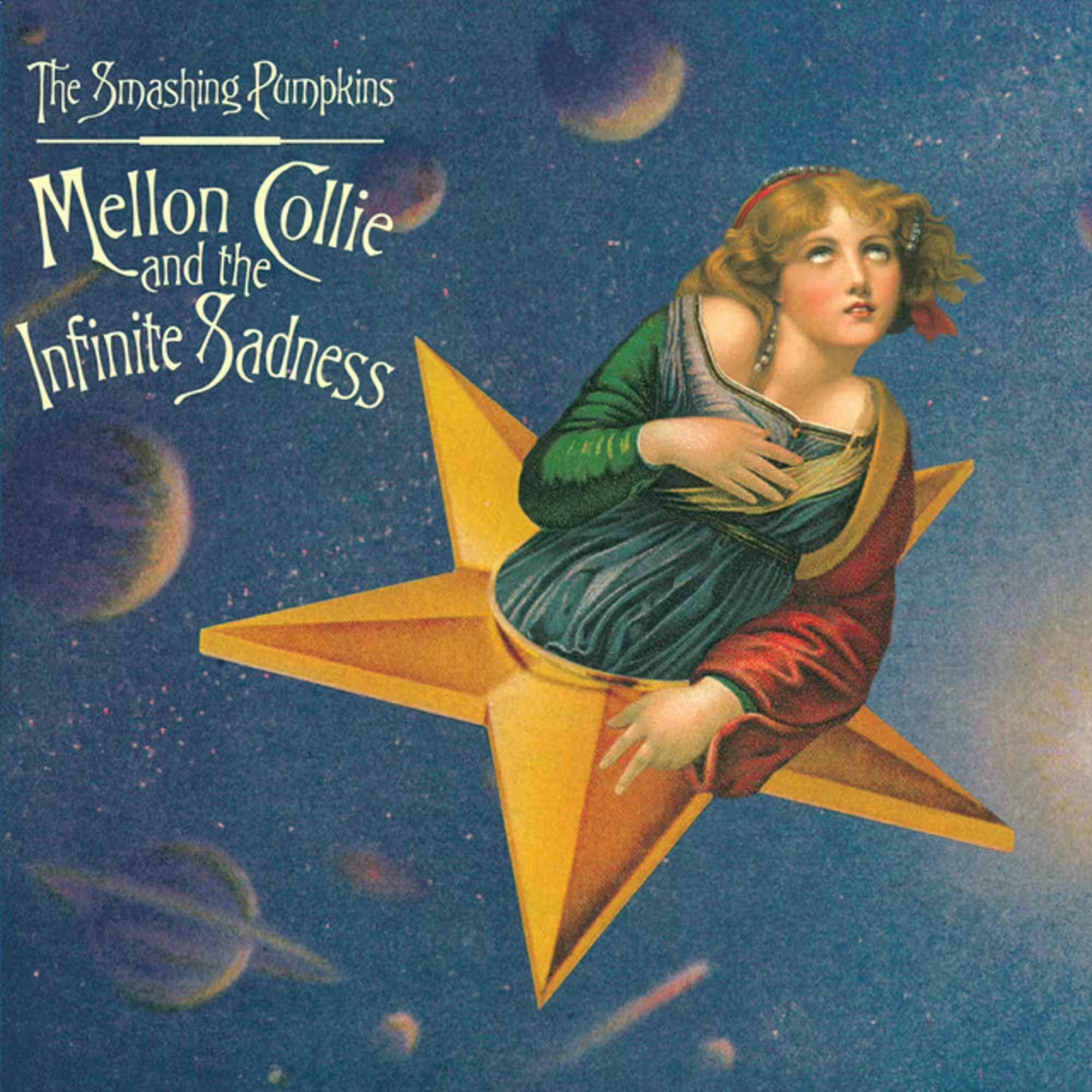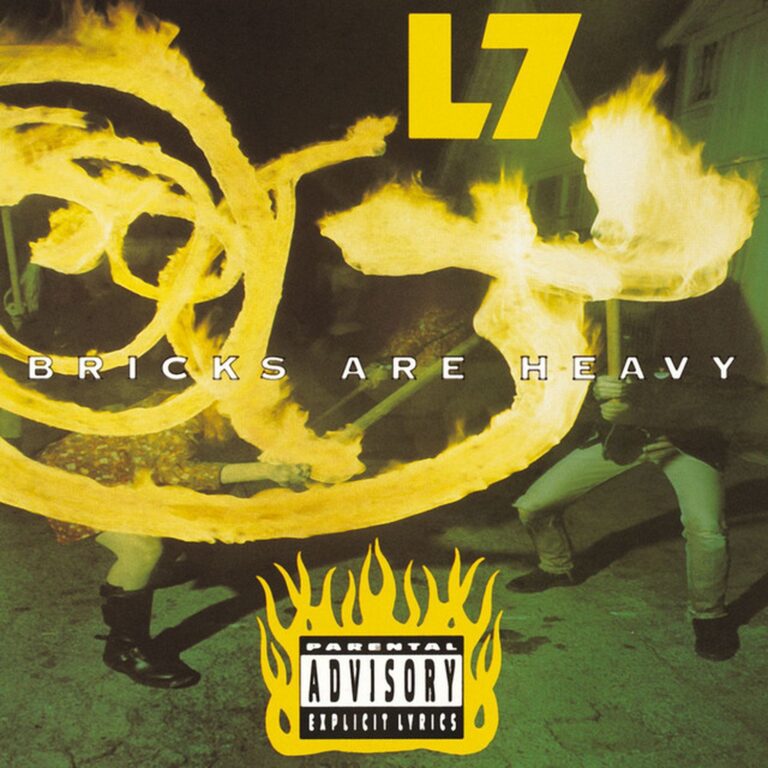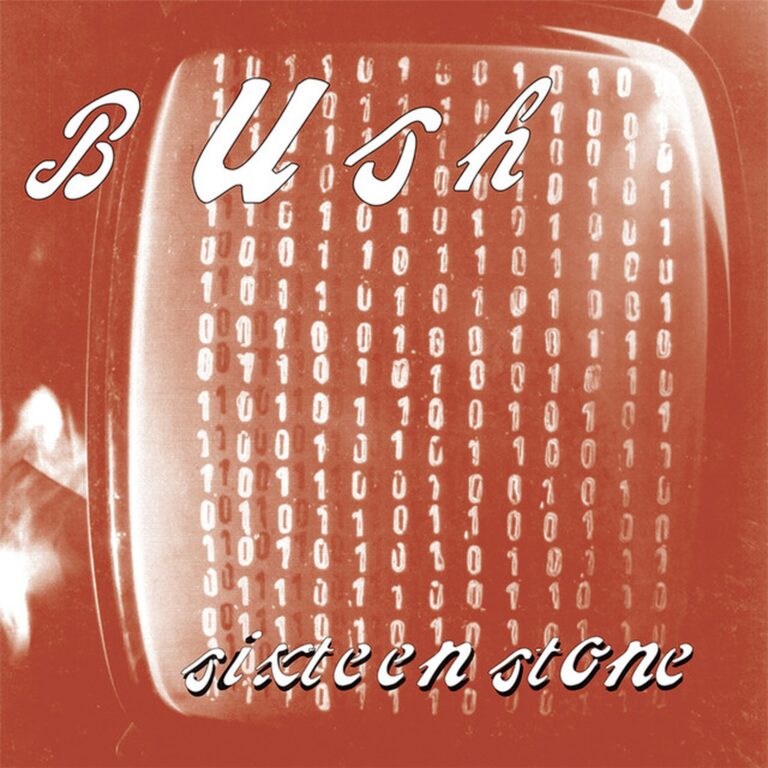
Introduction
On a chilly October day in 1995, The Smashing Pumpkins released an album that would shape alternative rock for decades. Mellon Collie and the Infinite Sadness was not just another double album—it was a statement, a sprawling and ambitious journey through sound, emotion, and the youth experience. The band, already established as innovators, now aimed even higher. They called it “The Wall for Generation X.” Even now, the album’s reach and reputation continue to grow, making it one of the most discussed and dissected works in rock history.
In this exhaustive article, I’ll take you through every corner of Mellon Collie and the Infinite Sadness. We’ll cover its origins, the people and studios behind it, the complex recording process, and the critical and commercial reaction. You’ll find deep dives into the lyrics, song meanings, and the album’s enduring influence. There’s a detailed look at the tour, its legacy, and how it fits into the story of The Smashing Pumpkins. If you want the most complete, factual, and accessible resource on this album, you’re in the right place.
Here’s what you’ll discover:
- Why Mellon Collie and the Infinite Sadness matters in music history
- How the album was conceived and recorded
- The people, gear, and studios that brought it to life
- How it was received by critics and fans
- Song-by-song breakdown and the stories behind the singles
- Its influence, legacy, and use in media
- What happened next for The Smashing Pumpkins
| Attribute | Details |
|---|---|
| Album title | Mellon Collie and the Infinite Sadness |
| Release date | 23 October 1995 (UK), 24 October 1995 (US) |
| Genre | Alternative rock, grunge, alternative metal, art rock, heavy metal |
| Total runtime | 121:39 (CD/cassette/2012 remaster), 128:06 (original vinyl) |
| Number of tracks | 28 (CD/cassette), 30 (original vinyl) |
| Record label | Virgin Records |
| Recording studio | Pumpkinland, Sadlands, Bugg (all Chicago), Chicago Recording Company (Chicago), Village Recorder (Los Angeles) |
| Producer(s) | Billy Corgan, Flood, Alan Moulder |
The album’s impact was immediate and lasting. It debuted at number one on the US Billboard 200 and was certified Diamond by the RIAA, selling over 10 million copies in the US alone. The singles “Bullet with Butterfly Wings,” “1979,” “Tonight, Tonight,” “Zero,” and “Thirty-Three” all became hits, helping the band cross into mainstream pop radio for the first time. The album won the Grammy for Best Hard Rock Performance and was nominated for Album of the Year. Critics called it “a whirlwind of energy, with dynamic ballads and a broad stylistic range” (Matthew Reyes, Medium).
Billy Corgan himself once said, “I wanted to make the White Album of the 90s. Something that would stand the test of time and show the full scope of what we could do.” Producer Flood recalled, “Billy was relentless. He wanted every idea explored. That’s how you get a record like this.” Guitarist James Iha put it more simply: “We wanted to make something that was beautiful and heavy and strange, all at once.”
The Genesis of “Mellon Collie and the Infinite Sadness”
Before 1995, The Smashing Pumpkins had already made waves with their albums Gish and Siamese Dream. The band’s journey to Mellon Collie and the Infinite Sadness began in the aftermath of a gruelling 13-month tour for Siamese Dream. Billy Corgan started writing new material with the aim of creating something bigger and more ambitious than anything before. The idea of a double album took shape early, inspired by classics like The Beatles’ White Album.
The musical and cultural landscape was shifting. Grunge was still strong, but alternative rock was splintering. Corgan described the album as “The Wall for Generation X,” referencing Pink Floyd’s epic. The concept was loosely based on a day-to-night cycle—“Dawn to Dusk” and “Twilight to Starlight”—but it was not a strict concept album. Instead, the band set out to capture the “human condition of mortal sorrow,” with a special focus on youth and the turbulence of growing up.
All four band members contributed more than on previous records. Billy Corgan wrote most of the songs and played guitar, piano, and keyboards. James Iha took a larger role, writing and singing “Take Me Down” and co-writing “Farewell and Goodnight.” D’arcy Wretzky played bass and sang on “Beautiful” and “Farewell and Goodnight.” Jimmy Chamberlin handled drums and also contributed vocals to the closing track. The Chicago Symphony Orchestra played on “Tonight, Tonight,” and Greg Leisz added pedal steel to “Take Me Down.”
Here’s a breakdown of the band’s roles:
| Band Member | Instruments/Roles |
|---|---|
| Billy Corgan | Vocals, lead and rhythm guitar, piano, keyboards, autoharp, production, mixing, string arrangement (“Tonight, Tonight”), art direction |
| James Iha | Rhythm and lead guitar, vocals, mixing and additional production (“Take Me Down”, “Farewell and Goodnight”) |
| D’arcy Wretzky | Bass guitar, vocals (“Beautiful”, “Farewell and Goodnight”) |
| Jimmy Chamberlin | Drums, vocals (“Farewell and Goodnight”) |
Virgin Records financed the album, which cost well over $1 million to make. The band faced pressure from the label, which was sceptical about the commercial viability of a double album. Corgan was determined to make the project work, saying, “We knew it was a risk, but we felt it was the only way to capture everything we wanted to say.”
The title came from Corgan’s fascination with loss, nostalgia, and the search for meaning. The artwork, created by John Craig, drew on Corgan’s notes and sketches. The cover features a collage of a woman’s face from Jean-Baptiste Greuze’s painting The Souvenir (Fidelity) and the body from Raphael’s Saint Catherine of Alexandria. The rest of the packaging is filled with antique-style illustrations and dreamlike imagery, including animals smoking pipes and celestial bodies with faces.
Recording Process
The recording of Mellon Collie and the Infinite Sadness was as complex as the music itself. Sessions ran from March to August 1995 in several Chicago studios—Pumpkinland, Sadlands, Bugg, and Chicago Recording Company—as well as the Village Recorder in Los Angeles. The band chose not to work with Butch Vig this time, instead bringing in Flood and Alan Moulder, both known for their work with bands like Depeche Mode and My Bloody Valentine.
Flood introduced new working methods, including long rehearsals and jam sessions before any recording. To avoid downtime, two studios ran in parallel. This allowed the band to capture rhythm tracks live, a change from previous albums. For the first time, James Iha and D’arcy Wretzky had a more active role in the recording, with Corgan no longer playing almost every instrument himself. Over 57 songs were recorded, eventually trimmed to 28 for the final release.
Pro Tools was used for overdubs, loops, and sampling, a relatively new approach at the time. The album features a vast range of sounds: piano, synthesizers, drum loops, a live orchestra, and even household items like salt shakers and scissors. Guitars were tuned down a half-step, with some songs using a special “grunge tuning.” The guitar overdubs ranged from a single live take (“To Forgive”) to about 70 tracks (“Thru the Eyes of Ruby”).
Here’s a table of the main hardware and studio gear likely used during the sessions, based on known studio setups and fan research:
| Hardware/Equipment | Details/Usage |
|---|---|
| Marshall JMP-1 MIDI preamp | Main guitar preamp for distortion sounds, especially on “Zero,” “Bullet with Butterfly Wings” |
| Mesa Strategy 500 power amp | Used for guitar amplification; paired with Marshall JMP-1 |
| Alesis 3060 compressor | Key to achieving the thick, compressed guitar tone |
| Marshall 1960 cabinets with Celestion Greenbacks | Main speaker cabinets for guitars |
| Fender Jazzmaster guitar | Billy Corgan’s signature instrument, known for its unique pickup sound |
| Big Muff Op Amp distortion pedal | Used sparingly, mostly for additional fuzz layers |
| Pro Tools (early version) | For guitar overdubs, editing, and sampling |
| API console (Chicago Recording Company) | Used for tracking and mixing; valued for warmth and punch |
| SSL G+ console (Village Recorder) | Used for mixing, offering clarity and separation |
| Neumann U87 microphones | Likely used for vocals and some guitar amps |
| Assorted effects (phaser, flanger, tape echo) | Used for textural layers on guitar and vocals |
The recording was not without challenges. Flood encouraged the band to push boundaries, sometimes to the point of exhaustion. At one point, a power outage during the album’s release show in Chicago forced the band to restart “Zero” after a seven-minute delay. This event, far from derailing the night, became a memorable story in Pumpkins lore (SPCodex).
Flood and Alan Moulder brought deep experience to the project. Moulder had previously mixed Siamese Dream and worked with My Bloody Valentine, while Flood’s credits included Depeche Mode and U2. Their influence can be heard in the album’s rich textures and innovative arrangements.
Let’s look at other albums produced by Flood and Alan Moulder, excluding Mellon Collie and the Infinite Sadness:
| Producer | Artist | Album | Year |
|---|---|---|---|
| Alan Moulder | Nine Inch Nails | The Downward Spiral | 1994 |
| Alan Moulder | My Bloody Valentine | Loveless | 1991 |
| Flood | Depeche Mode | Violator | 1990 |
| Flood | U2 | Achtung Baby | 1991 |
| Alan Moulder | The Smashing Pumpkins | Siamese Dream (mixing) | 1993 |
Commercial Performance and Reception
From the moment it was released, Mellon Collie and the Infinite Sadness was a commercial powerhouse. It debuted at number one on the US Billboard 200, selling 246,500 copies in its first week. It remains the only Smashing Pumpkins album to top the Billboard 200. The album’s singles became radio staples, and the album went on to sell over 10 million copies in the US (Diamond certification), 1 million in Canada (Diamond), 4× Platinum in Australia, and Platinum in the UK, France, and Germany.
Let’s look at how it fits within the band’s discography. The table below shows all studio albums by The Smashing Pumpkins, with sales data where available:
| Album Title | Year | Sales Data |
|---|---|---|
| Gish | 1991 | 2.1 million |
| Siamese Dream | 1993 | 7.7 million |
| Mellon Collie and the Infinite Sadness | 1995 | 9.6 million |
| Adore | 1998 | 3.1 million |
| Machina/The Machines of God | 2000 | 1.8 million |
| Zeitgeist | 2007 | 1 million |
| Oceania | 2012 | N/A |
| Monuments to an Elegy | 2014 | N/A |
| Shiny and Oh So Bright, Vol. 1 / LP: No Past. No Future. No Sun. | 2018 | N/A |
| Cyr | 2020 | N/A |
| Atum: A Rock Opera in Three Acts | 2022–2023 | N/A |
| Aghori Mhori Mei | 2024 | N/A |
The album earned seven Grammy nominations in 1997, including Album of the Year and Record of the Year for “1979.” It won Best Hard Rock Performance for “Bullet with Butterfly Wings.” The “Tonight, Tonight” video picked up eight MTV Video Music Award nominations, winning Video of the Year. Critics and fans alike have called it one of the greatest albums of the 1990s. Rolling Stone ranked it #487 in their 2003 list of the 500 Greatest Albums of All Time.
In 1995, the alternative, rock, and metal scenes saw a wave of landmark releases. Here are some other notable albums from that year:
- Jagged Little Pill by Alanis Morissette [33 million sold]
- King for a Day… Fool for a Lifetime by Faith No More
- Alice in Chains by Alice in Chains
- Astro-Creep: 2000 by White Zombie
- Demanufacture by Fear Factory
- Adrenaline by Deftones
- Draconian Times by Paradise Lost
- Symbolic by Death
- Above by Mad Season
- Ozzmosis by Ozzy Osbourne
- Destroy Erase Improve by Meshuggah
- Stomp 442 by Anthrax
- Slaughter of the Soul by At the Gates
- NOLA by Down
In terms of awards and recognition, Mellon Collie and the Infinite Sadness also appeared in Spin’s “300 Best Albums of 1985–2014,” Colin Larkin’s All Time Top 1000 Albums, and 1001 Albums You Must Hear Before You Die.
Elsewhere in heavy music that year, bands like Slipknot, Soilwork, and Staind formed. Death metal and industrial acts released defining records, and Britpop peaked with albums by Pulp and Blur. It was a year of transition, with alternative rock at a crossroads and metal diversifying in new directions.
Track Analysis
Five singles were released from Mellon Collie and the Infinite Sadness: “Bullet with Butterfly Wings,” “1979,” “Zero,” “Tonight, Tonight,” and “Thirty-Three.” Each single was written by Billy Corgan except “Take Me Down” and “Farewell and Goodnight,” which credit James Iha. The singles all reached the US Top 40, with “1979” peaking at #12 and “Bullet with Butterfly Wings” at #22. The singles were backed by extensive B-sides, later collected in the box set The Aeroplane Flies High.
Here’s a table of all the tracks on the album, their length, and writing credits. Singles are marked with a *.
| Track Name | Length (seconds) | Writing Credit |
|---|---|---|
| Mellon Collie And The Infinite Sadness | 43 | Billy Corgan |
| Tonight, Tonight* | 65 | Billy Corgan |
| Jellybelly | 46 | Billy Corgan |
| Zero* | 67 | Billy Corgan |
| Here Is No Why | 47 | Billy Corgan |
| Bullet With Butterfly Wings* | 73 | Billy Corgan |
| To Forgive | 49 | Billy Corgan |
| An Ode To No One | 41 | Billy Corgan |
| Love | 42 | Billy Corgan |
| Cupid De Locke | 59 | Billy Corgan |
| Galapogos | 43 | Billy Corgan |
| Muzzle | 43 | Billy Corgan |
| Porcelina Of The Vast Oceans | 37 | Billy Corgan |
| Take Me Down | 42 | James Iha |
| Where Boys Fear To Tread | 39 | Billy Corgan |
| Bodies | 44 | Billy Corgan |
| Thirty-Three* | 48 | Billy Corgan |
| In The Arms Of Sleep | 37 | Billy Corgan |
| 1979* | 76 | Billy Corgan |
| Tales Of A Scorched Earth | 36 | Billy Corgan |
| Thru The Eyes Of Ruby | 39 | Billy Corgan |
| Stumbleine | 38 | Billy Corgan |
| X.Y.U. | 38 | Billy Corgan |
| We Only Come Out At Night | 37 | Billy Corgan |
| Beautiful | 36 | Billy Corgan |
| Lily | 37 | Billy Corgan |
| By Starlight | 41 | Billy Corgan |
| Farewell And Goodnight | 36 | James Iha, Billy Corgan |
Note: Tracks marked with * were released as singles. “Bullet with Butterfly Wings” reached #22 on the Billboard Hot 100, “1979” hit #12, “Zero” peaked at #46 (as an EP), “Tonight, Tonight” at #36, and “Thirty-Three” at #39.
Song Meaning and Lyrics
The singles from Mellon Collie and the Infinite Sadness all explore different themes, both personal and universal. “Bullet with Butterfly Wings” uses the famous line “Despite all my rage, I am still just a rat in a cage” to express frustration and the sense of being trapped. According to a detailed fan analysis (Reddit), the title is a metaphor for power and vulnerability—combining the destructive force of a bullet with the fragility of butterfly wings. Billy Corgan said in a 1996 Spin interview, “Music is my salvation, but in the end, you have to face life or it destroys you.”
“1979” is an ode to teenage years and fleeting innocence. The lyrics, written by Corgan, reflect nostalgia, existential uncertainty, and the feeling of not fitting in. “We don’t even care to shake these zipper blues / And we don’t know just where our bones will rest,” he sings, capturing a mood of drifting through youth (Musixmatch).
“Zero” is rooted in Corgan’s frustration during the 1994 Lollapalooza tour. The “Zero” character, introduced live, reflects emptiness and self-doubt: “Emptiness is loneliness, and loneliness is cleanliness, and cleanliness is godliness, and God is empty just like me.” The lyrics explore the conflict between negativity and the desire for meaning (Reddit).
“Tonight, Tonight” stands out for its orchestral sweep and message of hope. The opening line, “Time is never time at all,” sets the tone for a song about change, belief, and possibility. “Believe, believe in me, believe / That life can change, that you’re not stuck in vain.” Fans often connect the song with moments of transformation and the promise of new beginnings (iloveyoumorethanicecream).
“Thirty-Three” is sometimes seen as nostalgic, but others read it as anti-nostalgia. Corgan wrote it during a happy, optimistic period, looking forward rather than back. The lyrics encourage living in the moment and finding meaning in everyday life, not in longing for the past (Reddit).
Touring and Promotion of Mellon Collie and the Infinite Sadness
The promotion for Mellon Collie and the Infinite Sadness was as grand as the album itself. The band filmed elaborate music videos, including the award-winning “Tonight, Tonight,” which paid homage to early cinema. The “Bullet with Butterfly Wings” video became iconic for its muddy, dystopian imagery. The singles were released with a flood of B-sides, later collected in the Aeroplane Flies High box set.
The world tour in support of the album ran from late 1995 through 1997. The band played over 100 shows across North America, Europe, Asia, and Australia. The tour included major festivals, arenas, and some smaller venues for radio and TV broadcasts. The most notable show was the album’s release party at Chicago’s Riviera Theater, broadcast live on FM radio. The setlist included both new songs and fan favourites, with a memorable power outage during “Zero” that led to on-stage banter and a restart of the song (SPCodex).
During 1995, The Smashing Pumpkins shared festival bills and stages with acts like Sonic Youth, Garbage, and Cheap Trick. The tour was not without tragedy—touring keyboardist Jonathan Melvoin died of a heroin overdose in July 1996, and drummer Jimmy Chamberlin was fired after being arrested for drug possession. Despite these setbacks, the band completed the tour with replacement musicians, cementing their reputation for resilience and showmanship.
Influences and Legacy
The influences on Mellon Collie and the Infinite Sadness were as broad as the album itself. Corgan cited Joy Division, New Order, Bauhaus, Mahavishnu Orchestra, Yngwie Malmsteen, Queen, and Black Sabbath as touchstones. The album’s style ranges from heavy metal to art rock, shoegaze, orchestral pop, and electronic music.
Here’s a table showing key influences and those influenced by the album:
| Influences on “Mellon Collie and the Infinite Sadness” | Artists Influenced by “Mellon Collie and the Infinite Sadness” |
|---|---|
| Joy Division | Marilyn Manson |
| Queen | Deftones |
| Black Sabbath | Evanescence |
| The Cure | Third Eye Blind |
| David Bowie | Mark Hoppus (Blink-182) |
| Yngwie Malmsteen | Fall Out Boy |
| Bauhaus | M83 |
| Cheap Trick | Silversun Pickups |
| My Bloody Valentine | My Chemical Romance |
| Shoegaze (genre) | Code Orange |
Released in 1995, the album captured a moment of cultural and musical change. That year, Britpop was at its peak, grunge was waning, and metal was evolving into new subgenres. In the wider world, the internet was just starting to change how music was discovered and shared. The UK saw the launch of BBC’s Digital Audio Broadcasting, and 1% of the population had internet access. Films like GoldenEye and Clueless defined pop culture, while New Labour was rising in British politics. The Smashing Pumpkins’ ambitious album fit perfectly into this era of transition and experimentation.
Five Things about Mellon Collie and the Infinite Sadness
Let’s highlight five key facts about the album, all verified from credible sources:
| Fact | Details |
|---|---|
| 1. Only Smashing Pumpkins album to debut at #1 in the US | Sold 246,500 copies in its first week; Billboard 200 #1 |
| 2. Won a Grammy for Best Hard Rock Performance | “Bullet with Butterfly Wings” took the award in 1997 |
| 3. The album’s artwork was created by John Craig | Craig used collages based on Corgan’s notes and sketches |
| 4. The original vinyl pressing included two extra tracks | “Tonite Reprise” and “Infinite Sadness” are not on CD/cassette |
| 5. Over 57 songs were recorded for the sessions | The final album features 28 tracks; others appeared as B-sides |
Media and Television Usage
Several songs from Mellon Collie and the Infinite Sadness have been featured in film, TV, and games. Here’s a table of known uses, based on Tunefind data:
| Song Title | Media | Year |
|---|---|---|
| 1979 | Cold Case S4 E23, Grand Theft Auto IV, Baggio: The Divine Ponytail, Gran Turismo 5 | 2007, 2008, 2021, 2010 |
| Bullet with Butterfly Wings | Psych S6 E3, Cold Case S4 E1, Goosebumps S1 E6, Yellowjackets S2 E8, Black Adam, Rampage, South Park S13 E11, Guitar Hero 5 | 2011, 2006, 2023, 2023, 2022, 2018, 2009, 2009 |
| Muzzle | Roswell, New Mexico S3 E2 | 2021 |
Critical Reviews and Retrospectives
Upon release, critics praised the album’s ambition, scope, and diversity. Some criticised the lyrics as self-indulgent, but most agreed it was a landmark achievement. The album has since appeared in numerous “best of” lists and retrospectives. Rolling Stone, Spin, and AllMusic all rank it among the best albums of the 1990s. The album holds a place in popular and critical memory as the moment when alternative rock reached its creative peak.
After Mellon Collie and the Infinite Sadness
After the release of Mellon Collie and the Infinite Sadness, The Smashing Pumpkins experienced both success and turmoil. The band toured extensively, but tragedy struck with the death of keyboardist Jonathan Melvoin and the firing of drummer Jimmy Chamberlin. The next album, Adore, marked a shift to a darker, more electronic sound. The band’s popularity waned in the late 1990s, and after Machina/The Machines of God, they disbanded in 2000. Billy Corgan reformed the band in 2007, and they continue to release new music and tour, with the most recent album Aghori Mhori Mei announced for 2024.
Remasters and Reissues
The 2012 remastered box set of Mellon Collie and the Infinite Sadness was released as part of EMI’s reissue campaign. It included five CDs with 64 bonus tracks—demos, alternate versions, and unreleased material. The set also included a DVD of live performances from Brixton Academy (London) and Philipshalle (Düsseldorf). The remaster was overseen by Bob Ludwig and curated by Billy Corgan, with extensive liner notes and artwork reproductions. The original vinyl pressing, limited to 23,000 numbered copies, is now a collector’s item.
Conclusion
Mellon Collie and the Infinite Sadness remains one of the most ambitious and influential albums in alternative rock. Its blend of genres, emotions, and technical skill has ensured its place in music history. The Smashing Pumpkins continue to tour and release new music, with major shows scheduled for Europe and North America in 2025. The album’s legacy endures, inspiring new generations of musicians and fans.
Further Reading
For more on The Smashing Pumpkins, explore these resources:
- Unveiling Gish: The Smashing Pumpkins’ Iconic Debut (blog article)
- Siamese Dream: Unveiling The Smashing Pumpkins’ Vision (blog article)
- Adore: The Smashing Pumpkins’ Gothic Reinvention (blog article)
- Machina: The Smashing Pumpkins’ Bold Return to Rock (blog article)
- Wikipedia: Mellon Collie and the Infinite Sadness
- Official The Smashing Pumpkins website
- Universal Music Group (Virgin Records parent company)
Let us know in the comments what your thoughts are on Mellon Collie and the Infinite Sadness by The Smashing Pumpkins. Did we miss anything? Share your experiences and join the conversation!



